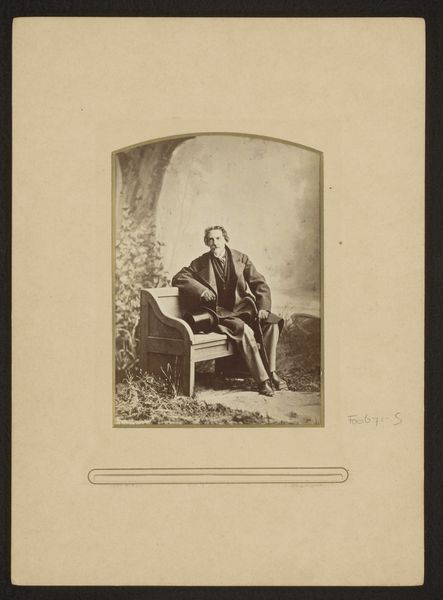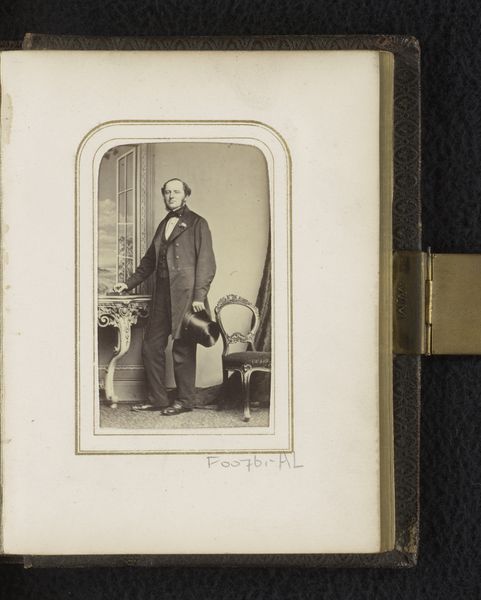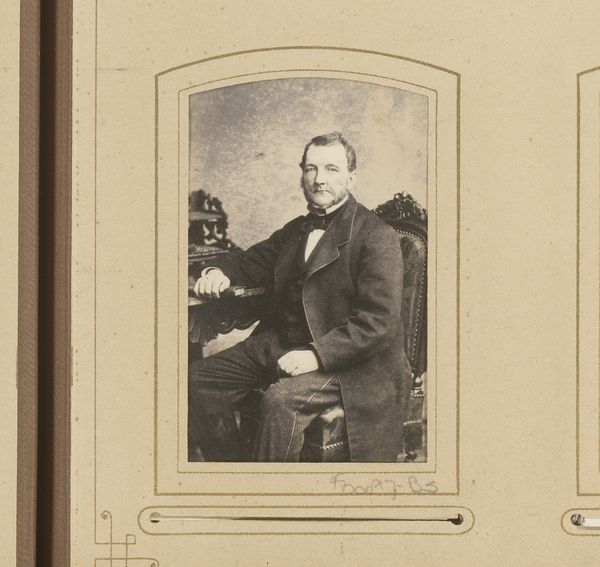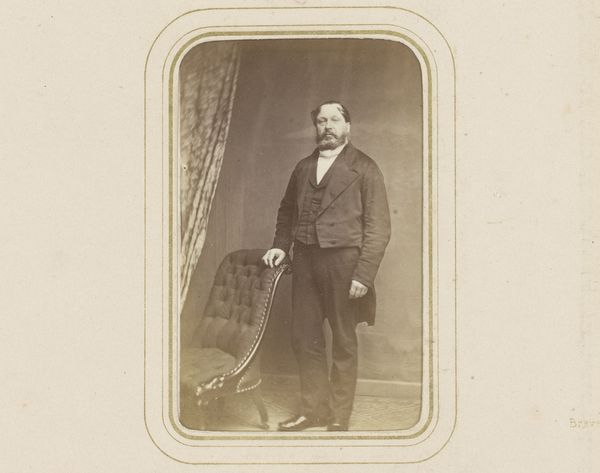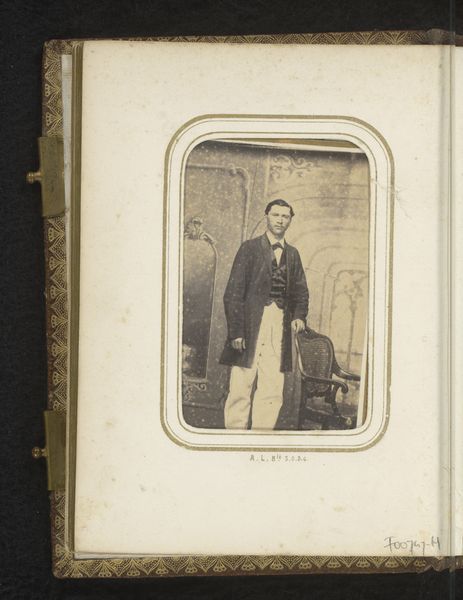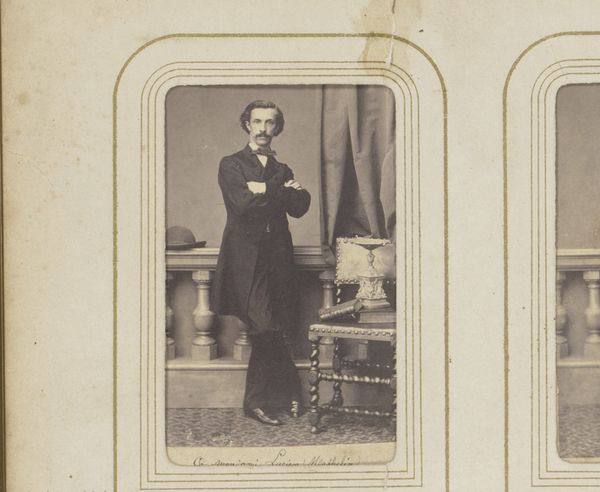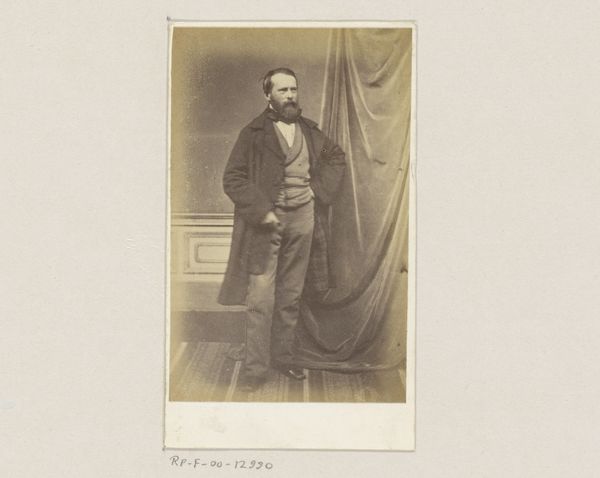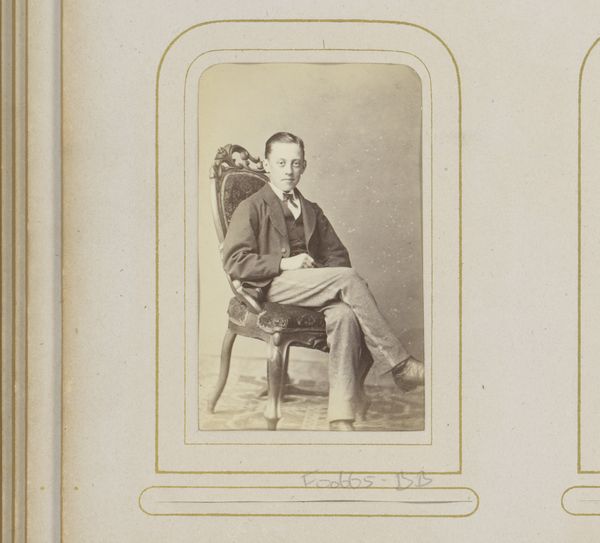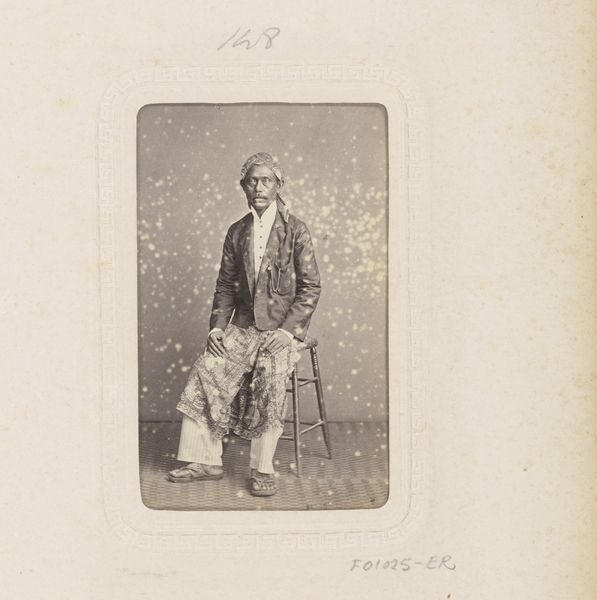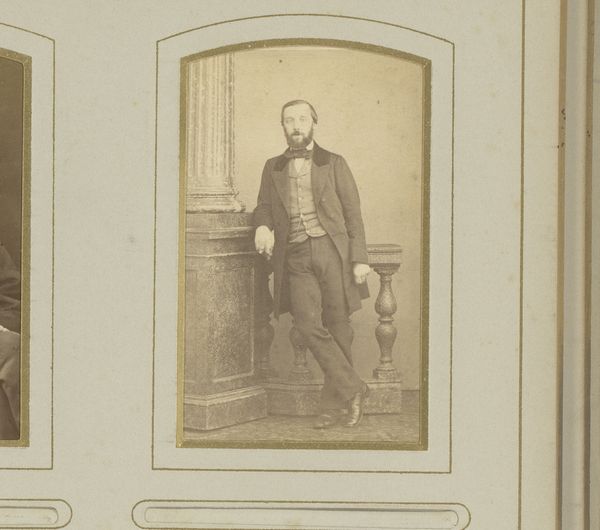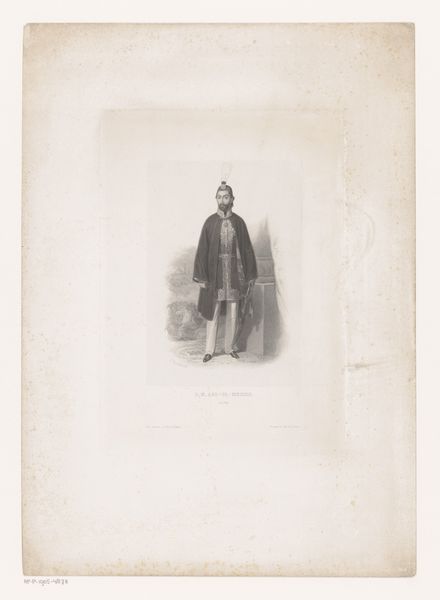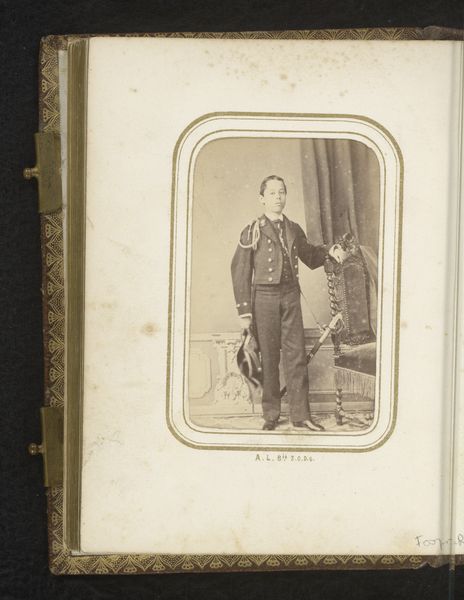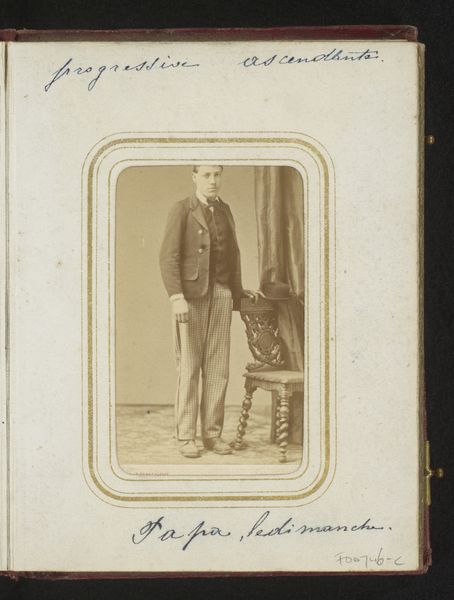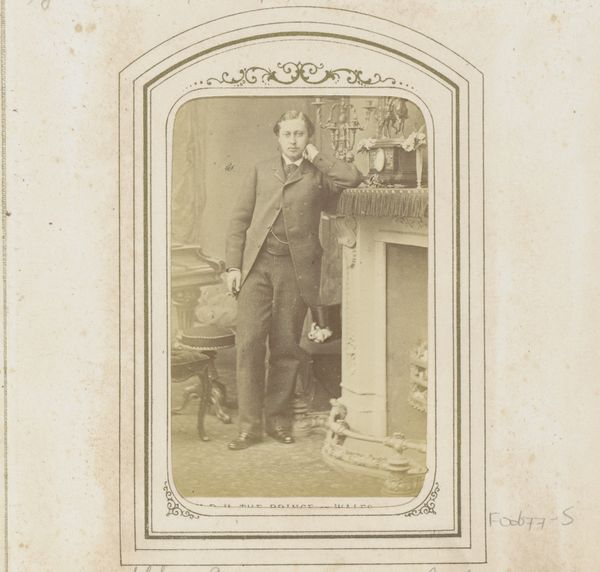
photography
#
portrait
#
16_19th-century
#
landscape
#
photography
Dimensions: 5.4 × 8.1 cm (image); 6.1 × 10.1 cm (card)
Copyright: Public Domain
This photograph, titled "Man at Niagara Falls," was made anonymously, using the wet collodion process, popular in the mid-19th century. That technique involved coating a glass plate with light-sensitive chemicals, exposing it in a camera while still wet, and then developing it immediately. It was demanding work, requiring a portable darkroom, and quite a bit of skill. Yet, it made photography more accessible than earlier methods. Here, the process yields a soft, sepia-toned image, capturing the grandeur of Niagara Falls and a lone man in a dark suit. The wet collodion process, with its relative ease and reproducibility, democratized image-making and fueled a burgeoning market for portraiture and landscape views. The resulting photographs, like this one, were often mounted on cards and sold as souvenirs, connecting the experience of the falls to the burgeoning culture of mass production and consumption. Considering the material and the way it was made allows us to appreciate the complex history of photography, situated between art, industry, and everyday life.
Comments
No comments
Be the first to comment and join the conversation on the ultimate creative platform.
